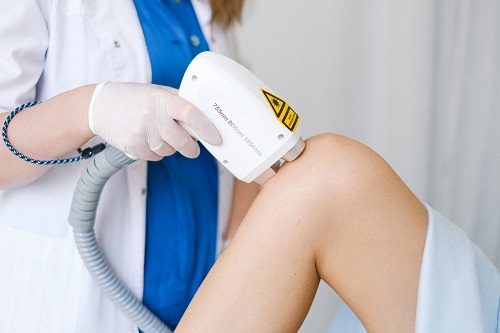Market Surveillance – Responsibilities of National Regulatory Authorities
We’ve explored post-market surveillance (PMS) for medical device manufacturers many times, for example, in our articles on post-market surveillance under the MDR, MDR post-market surveillance compared to the IVDR, and the relationships between literature search and clinical evaluation reports, PMS Vigilance, PMCF, and PSURs.
But what are the responsibilities of the national regulatory authorities, and how do they play into PMS and vigilance requirements for manufacturers, as well as into drug and device safety?
That’s what we’re looking into today!

National Regulatory Authorities
National Regulatory Authorities (NRAs) are the regulatory agencies that preside over medical device market authorizations around the world, such as The European Medicines Agency (EMA) in Europe, Health Canada, the Food and Drug Administration (FDA) in the US, and the Therapeutic Goods Administration (TGA) in Australia. The national authority defines post-market surveillance in the market and what needs to be done with incidents involving medical devices.
It is their job to ensure that medical devices that enter the market are safe and efficient and that they continue to meet safety, quality, and performance requirements during their lifetime in the market.

Responsibilities
The responsibilities of the national regulatory authorities regarding post-market surveillance and vigilance depend on the maturity of the market and the PMS programs in place.
Highly developed medical device markets, such as the European Union and the US, have elaborate post-market surveillance programs in place with well-established vigilance deadlines, periodic safety update report requirements, and incident report form templates.

Less developed markets, such as many countries in Latin America, have a much less developed post-market surveillance regulation and may not have established deadlines for adverse event reporting or periodic safety update reports and post-market surveillance report requirements.
Even so, the national regulatory authorities generally have standard responsibilities, no matter the level of maturity of the medical device market.
Falsified medical devices
The national regulatory authority is responsible for detecting and eliminating falsified medical devices.
While this is not a big deal in richer and more regulated regions, other regions frequently see news on falsified medical devices or drugs, and their governments are kept occupied with eliminating the devices from the market.
Likewise, national authorities are responsible for monitoring device registrations and authorizations and detecting unregistered medical devices or devices with expired market authorizations.

Awareness
A large part of the responsibilities of the national authorities is spreading awareness of and nudging users and patients to report any adverse events, incidents, or other feedback to manufacturers and the competent authorities.
A healthy market post-market surveillance system has processes in place for medical device monitoring and receiving feedback from users, and users feel empowered and willing to give said feedback voluntarily if they experience problems with medical devices.

Collect and forward post-market surveillance information
When the national regulatory authority receives word of a malfunctioning medical device or a medical device that is not behaving as it should, they should forward it to the manufacturer for their review.
Besides the direct reporting hubs most authorities have in place, post-market data can be gathered through several other channels:
- Sentinel sites can be established to collect data on the quality and performance of medical devices through the growing pool of electronic healthcare and usage data
- Signal detection is a way to discover trends of incidents happening with the same medical device through international device coding
- Post-market evaluations through monitoring national registries for specific product types, such as implants or high-risk class III devices
Review manufacturer vigilance reports
In most, if not all, countries, medical device manufacturers are obligated to report adverse events, incidents, and other severe problems with their devices to the national authorities.
Naturally, the main part of the authorities’ workload is reviewing these vigilance reports.
Reports typically include a detailed summary of the event, as well as a summary of the manufacturers’ investigation of the event and any potential corrective and preventive action taken to avoid it happening again.
Usually, a follow-up report is required once some time has passed to demonstrate that the manufacturer is keeping up with the post-market surveillance process and doing everything they can to ensure the safety of their users and patients.

Some of the main points the authority typically looks at when reviewing vigilance investigations are scientific rigor, evidence of any actions taken, the timeliness of the report and the following investigation, and the rationale the manufacturer presents for proceeding as they are.
Sometimes, manufacturers’ adverse event reports lack details or require clarification, in which case the authority reaches out to the manufacturer with their questions.
After the incident report and its follow-up reports have been submitted, the authority has received answers to all their questions, and any corrective or preventive actions have been implemented, the incident report can be closed.
Take regulatory action
Lastly, national regulatory authorities are responsible for deciding when and if to take regulatory action.

After the review of the incident report, the authority can choose to:
- Do nothing
- Perform extra post-market surveillance and monitor the device in question more thoroughly.
- Issue safety alerts to the public
- Require the manufacturer to take further action
- Mandate a manufacturer to perform a field safety corrective action (FSCA).
The mandated FSCA is the least common, but it does happen, and we likely all remember a case where devices or drugs were forcibly removed from the market by the regulatory authority.
When deciding what regulatory action to take, it is common for regulatory authorities to ask themselves:
- How much product was supplied and/or sold?
- Where is that product located – is it still in the distributor’s warehouse, or has everything been distributed to the final user?
- What is the remaining shelf-life for any product in the market?
- Is the manufacturer taking responsibility for the proper post-market surveillance actions and doing them in time, as agreed/promised?
- Is there an alternative product on the market for users?
Once they have considered all the information available.
This includes whether or not they will impose additional regulatory actions on the manufacturer or if the manufacturer’s plan and process are sufficient.

Most of us who work in the medical device industry consider post-market surveillance a job that lies heavily on the manufacturer.
We tend to forget the massive effort made by national authorities to implement surveillance systems that ensure the safety and performance of medical devices on the market.
Most regulations are not perfect, post-market surveillance programs even less so, but with the complexities of the current medical device market and the very public drug and device scandals in the last decade, we could maybe all appreciate the regulatory authorities’ effort a bit more.
If you need help with your post-market surveillance system or need a global adverse event review, you’re more than welcome to reach out to us at CiteMed.
